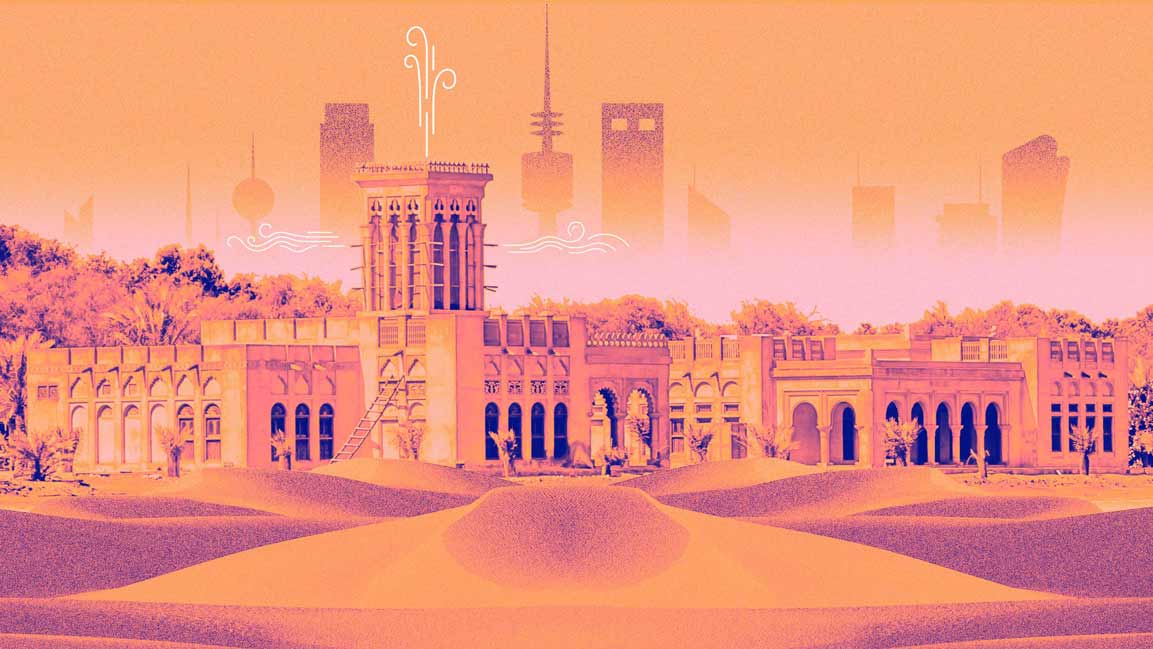- | 2:00 pm
Traditional Barjeel towers hold the key to sustainable cooling. So why isn’t it more popular?

If you live in Dubai, Doha, or Manama, air conditioning is an inseparable part of your surroundings. The AC remote is the first thing we reach for when we enter the office or living room. But as we casually flip the switch when the mercury rises, we tend to not give much thought to carbon emissions caused by air conditioners.
We’ve seen climate change force the government and corporations to go green. But have you introduced any drastic changes to your lifestyle? We have to face the fact that while we create comfort zones in our homes, the Middle East may become unlivable due to increased power consumption.
Solar parks across the region’s deserts are set to light up cities, but every part of the world doesn’t have the required infrastructure. At such a time, alternatives that rely less on electricity are essential.
Researchers at Saudi Arabia’s King Abdullah University have developed a technique where saltwater and sunlight act together to create a cooling effect without relying on electricity in Mali and Niger.
Black cup-shaped containers that absorb solar energy facilitate evaporation of water, which leaves us with salts capable of reducing water temperature and can be integrated into cooling mechanisms for large spaces. Researchers at KAUST have found that this technique keeps temperatures between 10 to 15 degrees Celsius for up to 15 hours, enough for storing food.
Now, science nerds already geeking out about the impact of this simple technique would be impressed to know how traditional wind catchers in the Middle East are architectural marvels that achieve natural air conditioning.
IS COOLING IN THE DESERT WITHOUT ELECTRICITY EVEN ACHIEVABLE?
Well, it has to work, considering that survival under harsh conditions depended on the science behind the Barjeel towers, which is as fascinating as the aesthetics of traditional architecture.
Origins of these chimney-like towers with openings can be traced back to ancient Egypt and Iran, going by similar structures found in archaeological remains. They became a mainstay for ancestral Emirati houses towards the beginning of the 20th century. Rising from rooftops, the wind catchers can reduce the temperature inside your home by up to 10 degrees celsius just by regulating the air circulation.
It’s not rocket science, just a plain old architectural trick since Barjeel towers have partitioned openings on four sides and vents to pump the hot air out of the residence. At the same time, wind entering the structure is cooled down using wet clothes on bamboo poles around the openings before being channeled towards the interiors.
Positive pressure is created on the side of the tower facing the wind, and the other side gets negative pressure. This difference pushes the fresh, calm wind down into the house while the stale hot air from within thrusts out from the other side.
SO, WHERE DID THESE MARVELS OF ENGINEERING DISAPPEAR?
The truth is they haven’t. You can still spot them at traditional houses across the emirates. The home of a pearl merchant, now converted into a museum, still features a two-storeyed windcatcher. Some parts of Qatar and Iran also have these airbending towers built using mud and stone to provide more efficient cooling.
Spectacular modern renditions of these towers are scattered across the Dubai Madinat Jumeirah resort, which is modeled after traditional settlements in the UAE. These towers can be spotted across the Al Bastakiya and Al Fahidi neighborhoods in Dubai.
HOW RELEVANT ARE THEY NOW?
Architecture that provides accurate results while consuming less power is true sustainability. In 2019 a Dubai-based design studio recycled 480 layers of cardboard to recreate traditional Barjeel towers. Young innovators from China recently built structures modeled after wind catchers to thwart sandstorms as part of a smart home competition in the UAE.
This tells us that traditions from this region are being explored for answers by curious minds on a global scale because they can provide affordable cooling in remote areas where air conditioners remain out of reach. You may see them as decorative additions to new buildings with a traditional aesthetic. However, wind catchers are still being used for adequate ventilation in older parts like downtown Dubai’s historic spice market.
In the new normal, better ventilation and open windows for offices are being pitched as architectural tweaks to prevent viruses from spreading in closed spaces and create a soothing environment. You’ll find that engineers have installed wind catchers in the UK, complete with solar panels and fans. At the same time, their peers reinvented the Barjeel towers for structures like the Spring Preserve building in Las Vegas and the Torrent research center in Ahmedabad.
CONTEMPORARY WIND CATCHERS ENHANCE THE TECHNIQUE
Now that architects and researchers are fascinated by this cooling tech that lets you save power, we’ll be seeing designs including wind catchers that rotate according to the direction of the wind to make the most of fresh air. Replacing clay and rocks with transparent material is being proposed to let natural light into buildings, saving even more energy during the daytime.
Another method is passing air through pipes inside trenches containing water for cooling down air sent back into the building, reducing the temperature by 20 degrees celsius. This is similar to another ancient Middle Eastern design feature called Qanats, which are water channels laid under the ground, working in tandem with wind towers built to release warm air.
We are at a time when we constantly depend on air conditioners that consume one-fifth of the energy used across the world. The demand for these devices is set to triple by 2050. Designing innovative wind catchers that enhance the effect of traditional Barjeel towers might hold the key for the gulf and neighboring regions to beat the heat without contributing to global warming.








































